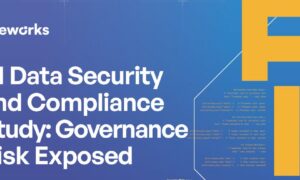Are you confident that your company is secure from external threats? Have you considered the potential risks that come with partnering with third-party vendors? Third-party risk management is a crucial aspect of any business, especially in the current digital age. With increasing reliance on technology and data, companies need to be more vigilant than ever in protecting their assets from potential breaches or other cyberattacks. In this article, we will explore the importance of third-party risk management and provide actionable steps to safeguard your business.
What is Third-Party Risk Management?
In simple terms, third-party risk management (TPRM) is the process of identifying, assessing, and mitigating risks posed by third-party vendors. It involves a series of steps that aim to protect an organization’s data, assets, reputation, and customer privacy. The risks that come with working with third-party vendors can be categorized into three main areas:
1. Operational Risks: These are risks associated with the operational activities of third-party vendors. They include inadequate or faulty products or services, disruptions in supply chain or production, poor quality control, and other operational failures.
2. Compliance Risks: These are risks associated with non-compliance with regulatory requirements, legal and ethical standards, and other contractual obligations.
3. Security Risks: These are risks associated with the security of the company’s data and systems. They include unauthorized access to sensitive information, data breaches, and cyber-attacks.
Why is Third-Party Risk Management Important?
Third-party risk management is essential because it helps organizations to identify and manage risks associated with their third-party vendors. By doing so, companies can avoid significant reputational, financial, and legal damages that may arise from security breaches or other operational failures. A good example of the importance of TPRM is the Target data breach in 2013, which was caused by a third-party vendor that had access to Target’s network. The breach resulted in the theft of 40 million credit card numbers and cost the company more than $200 million in damages.
Moreover, regulatory bodies are increasingly demanding that companies have effective TPRM programs in place. For instance, the General Data Protection Regulation (GDPR) requires companies to ensure that their third-party vendors comply with the regulation’s data protection requirements. Failure to comply with these regulations can result in hefty fines and legal penalties.
How to Develop an Effective Third-Party Risk Management Program?
Developing an effective third-party risk management program involves several steps. Here are some of the critical steps to follow:
1. Identify Third-Party Vendors: Start by identifying all the third-party vendors that your organization works with. This includes suppliers, contractors, consultants, and any other external party that has access to your systems or data.
2. Assess the Risks: Once you have identified the third-party vendors, assess the risks that come with working with them. This includes conducting due diligence on their security measures, compliance with regulatory requirements, and any past incidents of data breaches or other operational failures.
3. Mitigate the Risks: After identifying the risks, develop and implement appropriate measures to mitigate them. This may include implementing security controls, establishing clear contractual obligations, and providing adequate training to third-party vendors.
4. Monitor and Review: Continuously monitor and review the effectiveness of your TPRM program to ensure that it remains up to date and effective.
In addition to these steps, it is also essential to establish clear communication channels with third-party vendors. This will help ensure that they understand your expectations and obligations, and that they are aware of their responsibilities in protecting your organization’s assets.
Final Thoughts
Third-party risk management is a critical aspect of any business, especially in the current digital age. Companies need to be more vigilant than ever in protecting their assets from potential external threats. In today’s interconnected business environment, it is nearly impossible to operate without engaging with third-party vendors. However, working with third-party vendors can also expose companies to significant risks, including operational failures, compliance issues, and cyber-attacks. Therefore, organizations need to develop effective third-party risk management programs to identify, assess, and mitigate these risks.



































